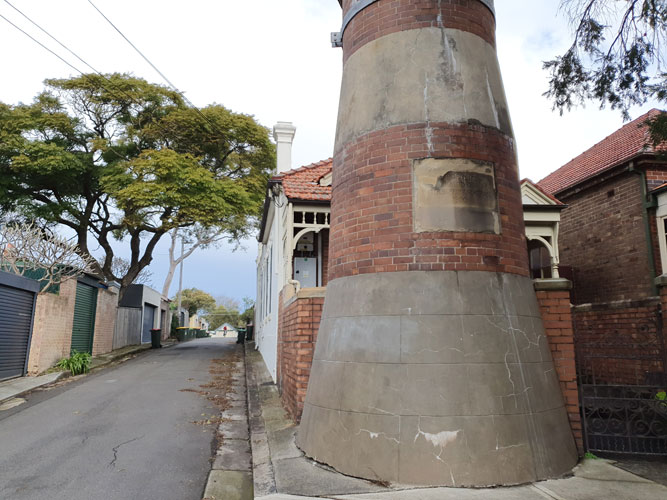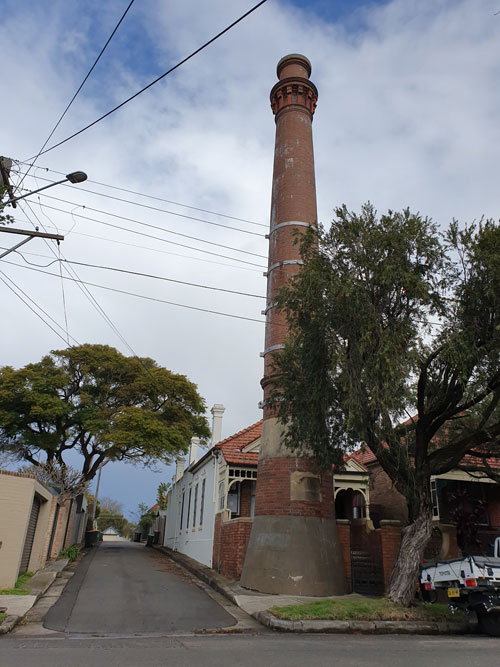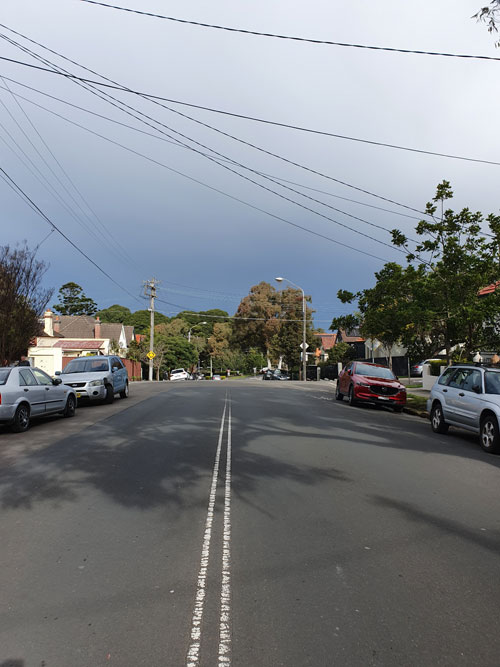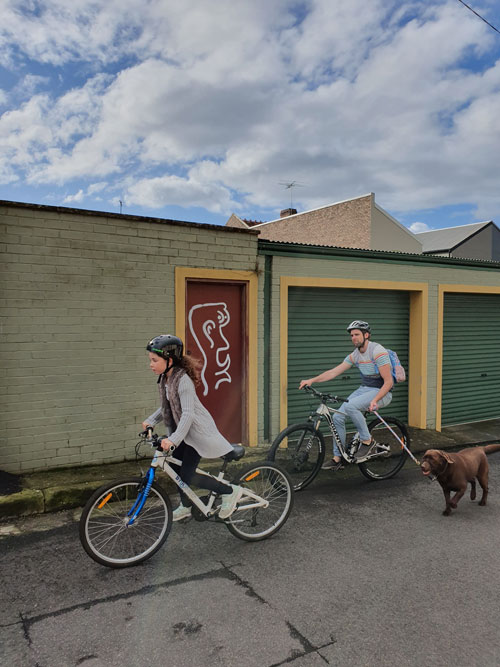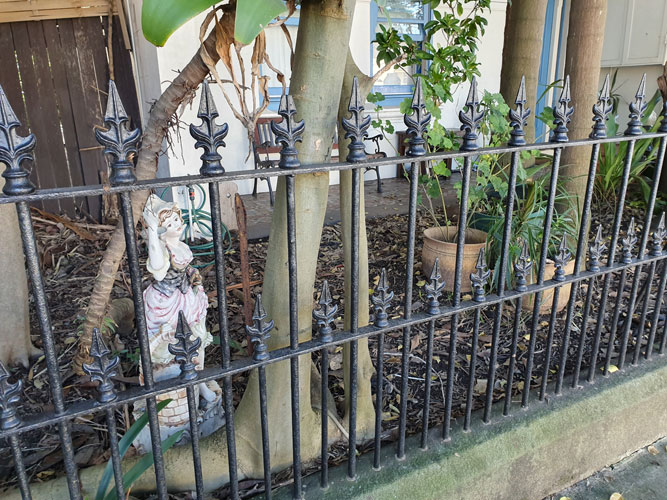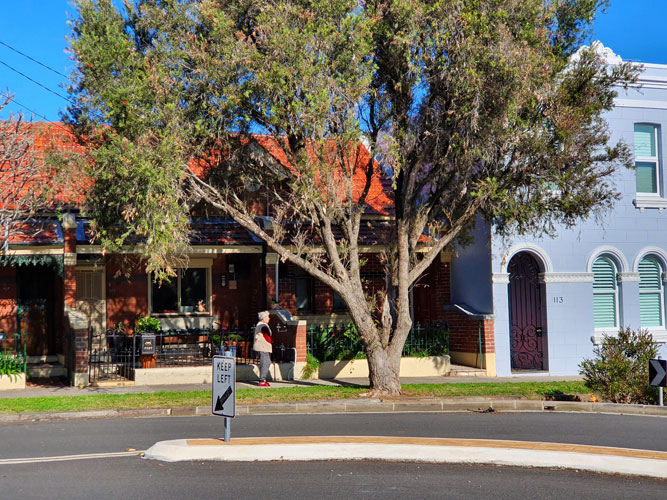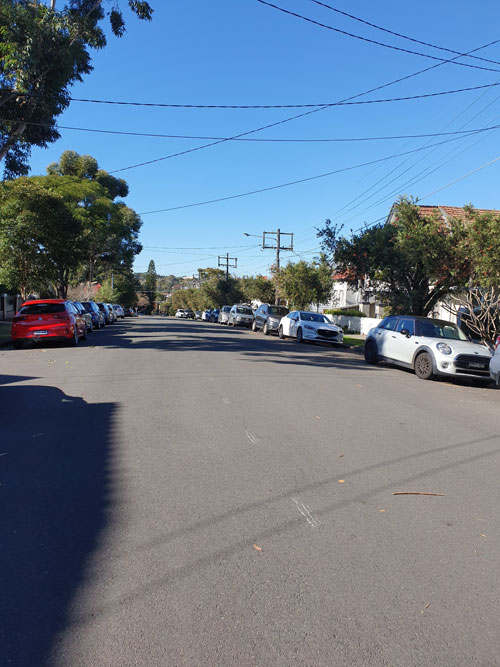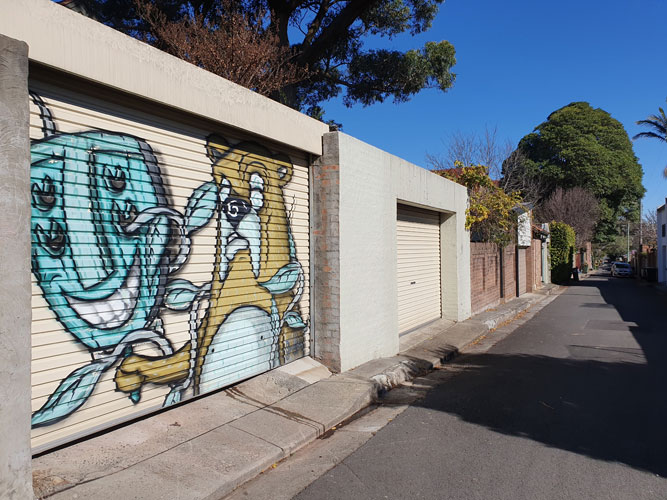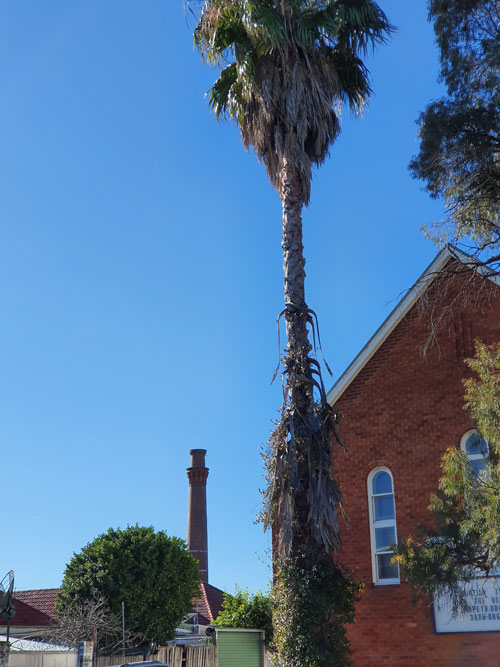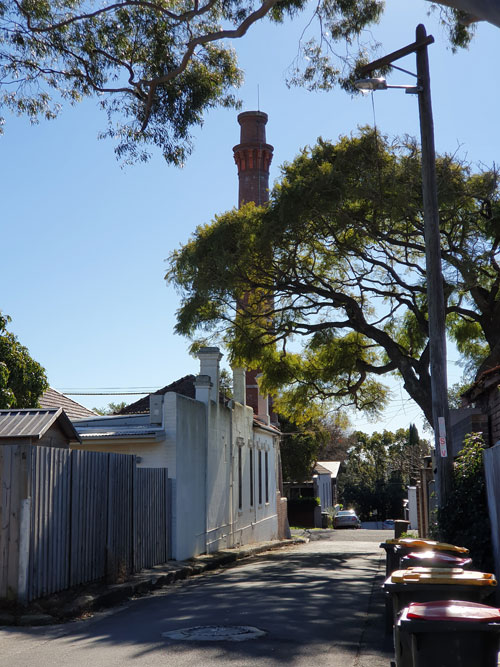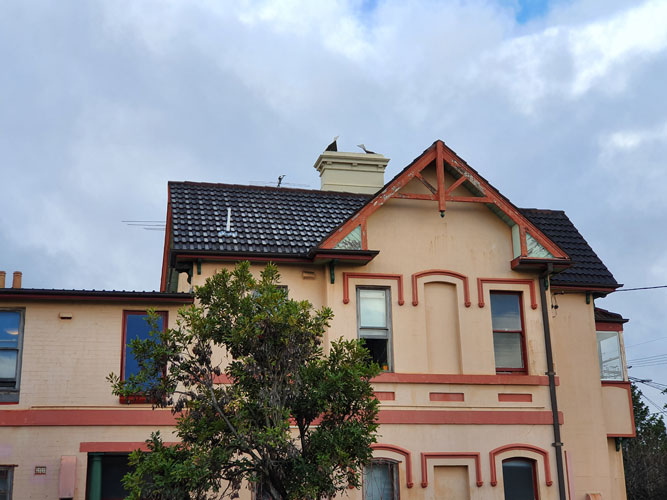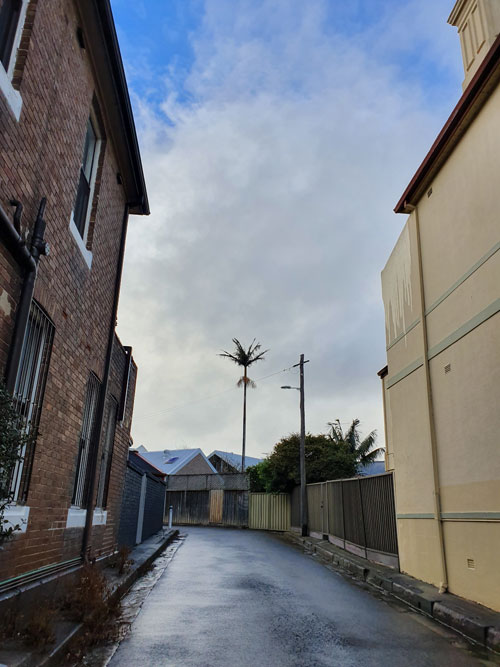11 July 2021
I am back at the magnificent Stanmore Sewer Vent. It is going to rain, but I have started out on this episode of my walk around the rim of the Johnstons Creek catchment because I want to photograph the vent under an overcast sky. Last time I was here the dappled shade from street trees obscured the details of its flaking sandstone plaque which, it turns out, reads METROPOLITAN BOARD OF WATER SUPPLY & SEWERAGE 1900.
As I stand back to get a full-height shot of the vent and its accompanying house, a man runs across the road, angrily kicking a piece of wood as he goes, and enters the cottage’s front gate. I call out, ‘I hope you don’t mind’ and he growls, ‘You can take photos of a sewer vent any time’.
Our route takes us round into Percival Road, the main street of Stanmore, flanked by more neat turn-of-the-20th-century houses and leading down to a park, the railway station and a small cluster of shops. The sky to the south is looking ominous.
The rim line runs between houses and emerges in the lane behind, where I find a garage roller-door tribute to the composer Philip Glass complete with sketch portrait.
In an adjacent lane a man is taking his kids and dog for their permitted outdoor exercise in their local government area. Apart from the cranky sewer vent resident we have, as usual, seen practically no-one on our walk. People are all inside as the Covid situation worsens. In the state of New South Wales there have been 77 new cases today and one death.
(The previous paragraph now seems ridiculous. I need to point out here that, although I took this walk on 11 July 2021, I have not got round to transcribing my notes until six months later. The Covid comparison is staggering.
I am composing this blog post on 1 January 2022, when 22,577 new infections have been recorded in New South Wales and four deaths. The reasons for the differing case number statistics (but reasonably similar death rate) between July and January include the intervening advent of the Delta and Omicron variants of the virus, the lifting of lockdowns and restrictions on movement, and a very high proportion of the adult population fully vaccinated.)
It is spitting now and we have not brought umbrellas, so we loop back around to the car, passing a cute domestic wall decoration on the way. Safely ensconced at home I think I might listen to some favourite music – Philip Glass perhaps.
